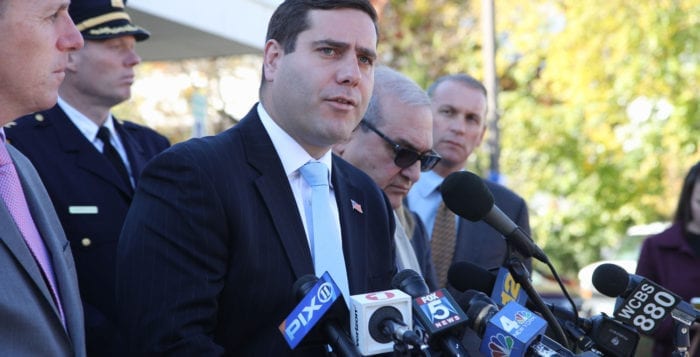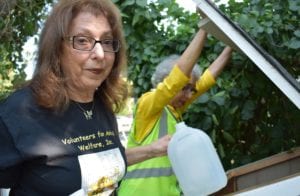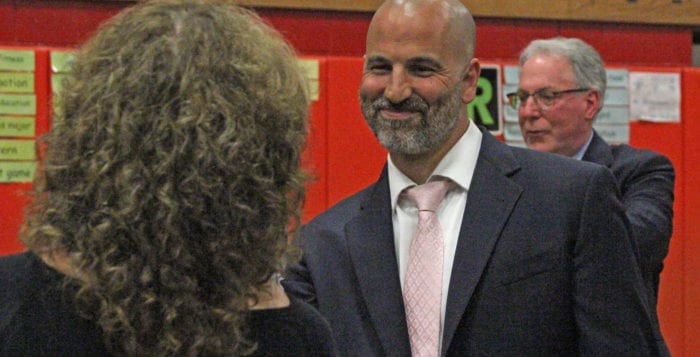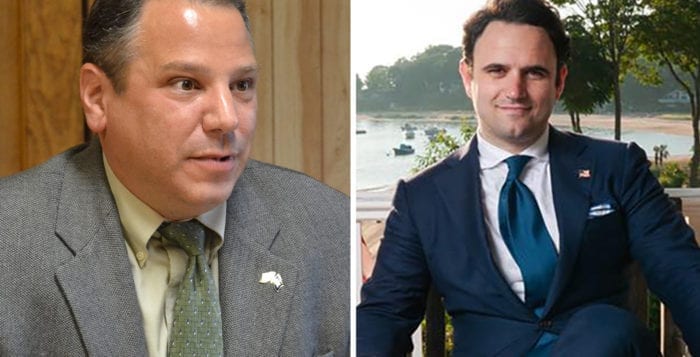Suffolk County now has a new drug program that judges and prosecutors hope will offer nonviolent offenders a means to get clean before they repeat offenses.
Suffolk County District Attorney Tim Sini (D) along with several drug court judges announced Aug. 13 the creation of the new Comprehensive Addiction Recovery and Education Program that will allow people charged with low-level drug crimes to instead be sent into a drug treatment program rather than being matriculated through the standard legal system. If the participants finish the program clean, they are promised the charges will be dismissed.
“We consistently heard that in some cases requiring defendants to take a plea prior to accepting treatment is a disincentive [to seek court treatment options],” Sini said at the press conference. “By connecting these individuals to treatment, we will not only be helping to tackle the disease of addiction … we will also be improving public safety by addressing the underlying motivation to commit crimes fueled by drug abuse.”
Those charged with misdemeanor drug crimes can participate in the program without having to enter a guilty plea. Those who sign up for the program work with members of court staff to develop a treatment plan and determine what services will be available. The program lasts for 90 days, but the person involved in the program can ask for a longer term.
“It should result in increased numbers who receive the benefit of treatment given the crisis that we’re facing both locally and nationally,” Suffolk County District Administrative Judge Randall Hinrichs said.
What makes the program remarkable, according to Karen Kerr, the supervising judge of Suffolk County District Court, is that without having to plead guilty more people will be more willing to participate.
“For many people, particularly those people with minimal to no record, it was just too much of a risk for them to take [the plea],” Kerr said. “I felt there was a group of people who really could use the help but who just didn’t want to take the chance.”
The timing for this program comes as the numbers of opioid-related deaths have peaked in the past two years. Suffolk Chief Medical Examiner Michael Caplan said in June the office has data on approximately 360 county deaths from opioid overdoses in 2017. The office is expecting a decline in the number of deaths this year by more than 100, but officials won’t know the results until they compile all data at the end of the year.
The program is open to defendants who have minimal or no criminal record and who have no history of violence or gang involvement. Those charged with misdemeanors of petit larceny, criminal possession of marijuana, criminal possession of a controlled substance, criminal trespass, criminal possession of hypodermic instrument, criminal use of drug paraphernalia, disorderly conduct or loitering are eligible for the program as long as the drug court determines they are addicted to any kind of hard drug.
Kerr said that the district attorney determines whether a person should be screened for a drug problem and then the person is referred to the CARE court date, always held on Tuesdays, and then the court treatment team will ask a number of questions to determine if there is an issue.
Officials said they expect many people to be eligible for the CARE program. District attorney spokeswoman Sheila Kelly said the office noted from April to June of this year approximately 600 people would have fit the criteria to be allowed to enter into the program.
Violations of the program include being arrested on new charges, not participating in the treatment program as recommended or not reporting to scheduled court appearances. Participants are drug tested prior to finishing the program.
Hinrichs said the court and the DA’s office will be monitoring the program to see results and identify its efficacy and inclusiveness.












 While he said he didn’t wish to disappoint the school, the opportunity came suddenly. The job is in the law enforcement field, but he declined to reveal exact specifics about the job.
While he said he didn’t wish to disappoint the school, the opportunity came suddenly. The job is in the law enforcement field, but he declined to reveal exact specifics about the job.






















